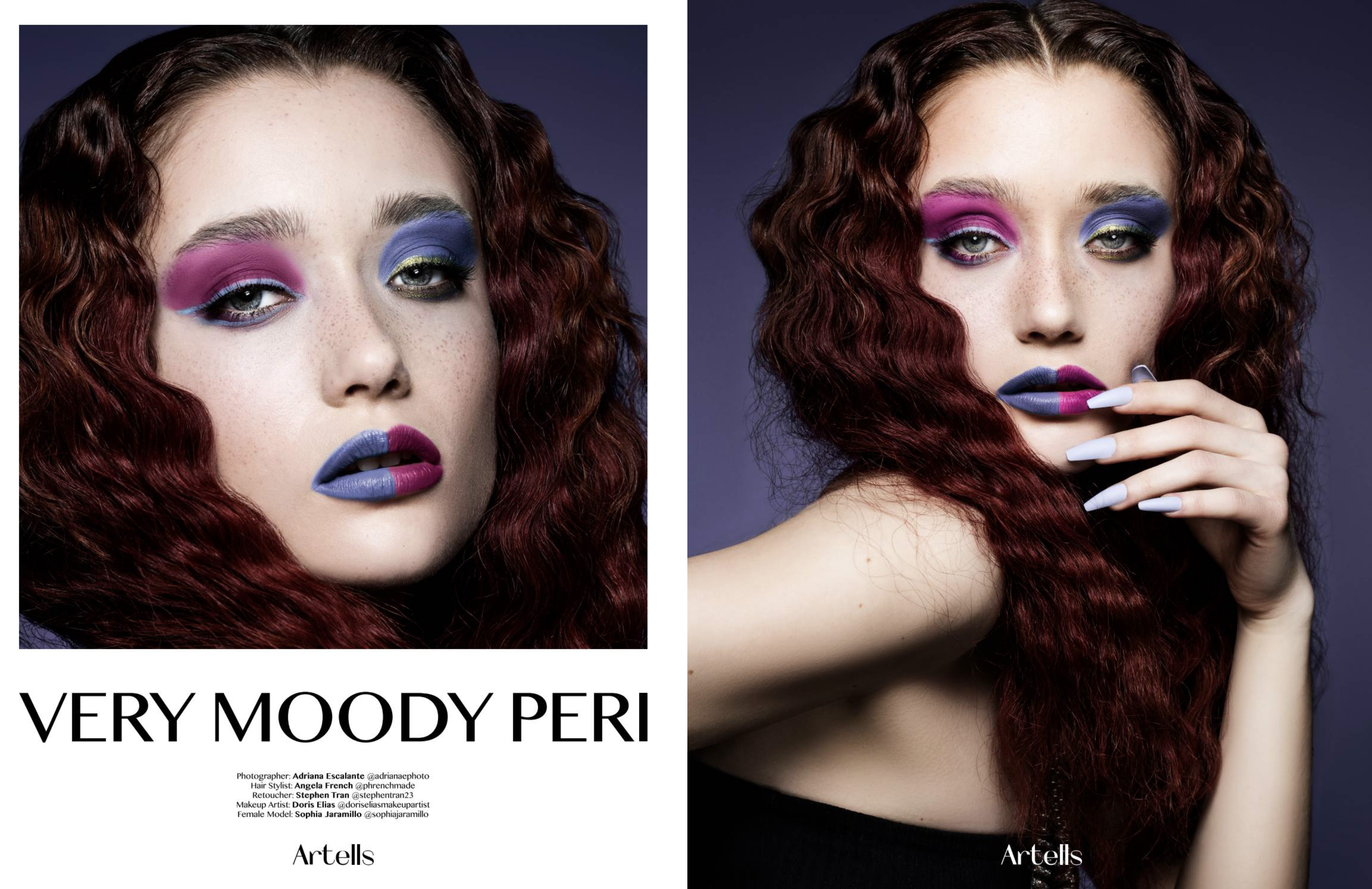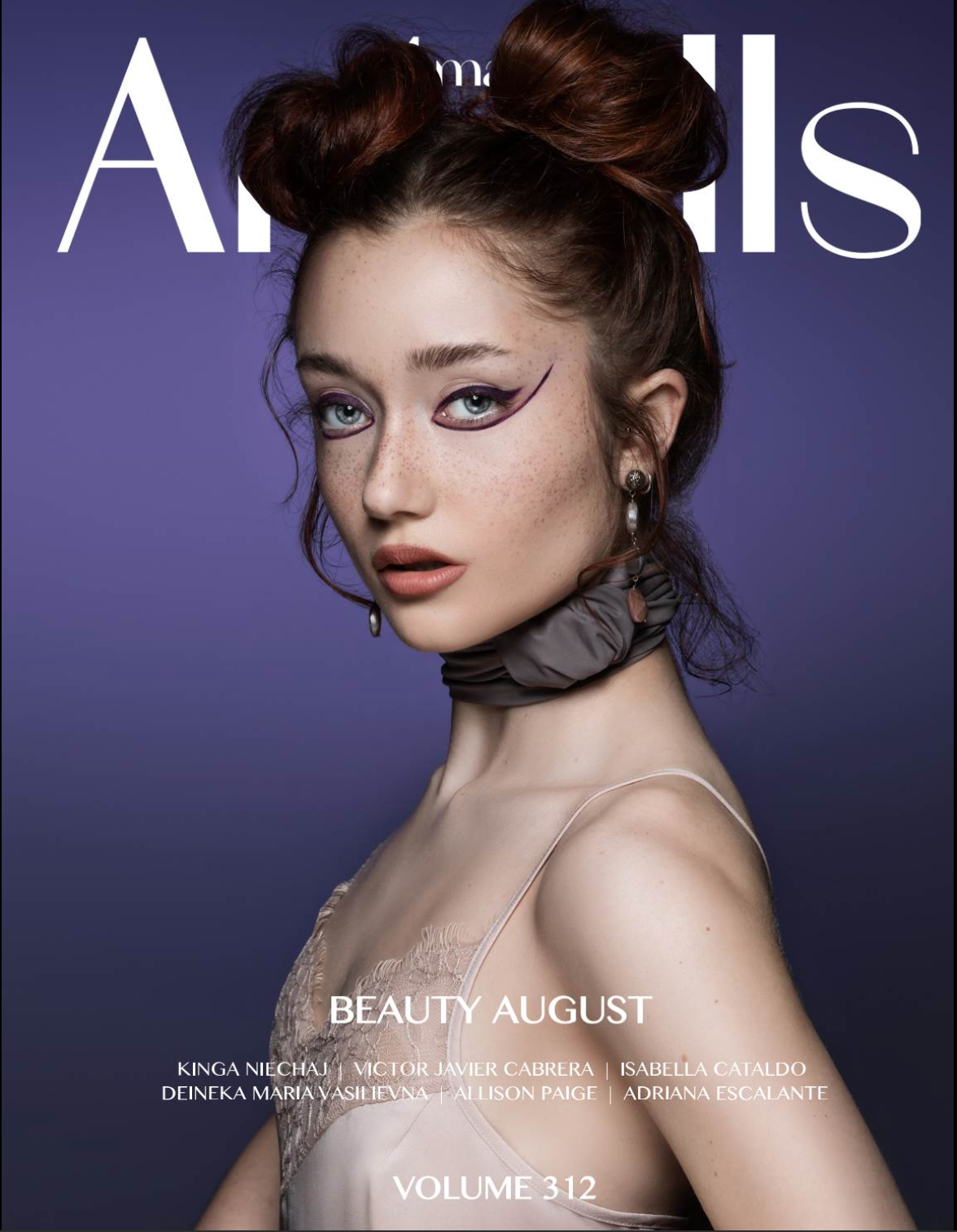Artells Magazine published in its August 2022 issue my beauty editorial called Very Moody Peri inspired by the Pantone color of the year2022 Very Peri. On this issue of Artells, Very Moody Peri got the cover and an interview! Wow! 😱

When I submit work to a magazine, I really don't know what's going to happen. Obviously, there is only a 50% chance of acceptance and 50% of rejection, but there are so many amazing portraits and fashion photographers out there also competing for that magazine spot that it is always super exciting to open your email and find out that your photos have been accepted.
Having your photos published is a validation of hard work and that of the other creatives in the team. We all put tremendous time and effort into the production of a single photo shoot and having a published editorial in an art and fashion magazine like Artells Magazine is well-deserved recognition for a job well done.
THE COVER
Being published by a magazine is always a great feeling and undoubtedly an honor, but being interviewed by one plus getting the cover is just surreal. 🥰

For this blog post, I thought I would just transcribe the interview because unless you buy the issue, which I encourage you to do, it is hard to read the content of the interview otherwise. I will write another post about the making of Very Moody Peri just like I did for The Candy Shop.
Before I do so, I want to thank my amazing team that made Very Moody Peri beauty editorial inspired by the Pantone color of the year 2022 Very Peri possible and impactful: the beautiful and talented model, Sophia Jaramillo, the amazing cinematic makeup artist, Doris Elias, and the super talented hair stylist, Angela French. THANK YOU!!!
THE INTERVIEW
The interview with Artells Magazine of art and fashion was a series of 5 questions that I needed to answer in writing for the publication of their August 2022 issue. The questions were about my personal interests and advice to fellow photographers. I hope that you enjoy the interview and learn a bit more about me as a photographer and as a person.
Question 1: Tell us about yourself and your profession.
Answer#1: I am a self-made full-time commercial, portraits, beauty, and fashion professional photographer. I was born in Peru and raised in many countries until I came to the US to study, and then settled in the Washington, DC area (DMV) with my husband and three children (2 in college and 1 starting high school). I have a college degree in information systems and 2 MBAs, one from American University and the other from Université de Paris IX - Dauphine, and for many years I was in the Telecom Industry. Having a technical background and business education helped me start a few businesses. One of those businesses was a fashion online magazine in Spanish that was very popular, with editors all over the world covering the latest and greatest in all things fashion, beauty, and wellness. I was the editor-in-chief and also the principal photographer. However, I had to leave that behind when my parents passed away so that I would take care of them. After that, I started a non-profit organization with 9 Latinas to help Latino families in the DMV area, which I still run on the side. A few years later, I decided to go full-time with my photography which I had sort of put on the back burner for a few years. Now, running my photography business is all I do and I am loving life.
Question 2: What are the pros and cons of your work?
Answer #2: What I love the most about photography is that once you know the technical aspects of it and you have a good knowledge of light and lighting, the sky is the limit for your own creativity. Of course, not all photography projects require all-out creativity, but creativity is always present and a key component, even in a corporate headshot. If you have your own photography business as I do, owning my time means everything. I set the schedule, the rules, the prices everything, and my clients abide. One of the cons of photography is, in all honesty, the culling, editing, and retouching of photos when it comes to volume. Another con is that people think that photography is just clicking the shutter and voilà, magic just happened. So they don't value the hours invested behind the scenes before, during, and after a photo shoot. Therefore, it is so important that we, as photographers, educate our clientele that we charge what we charge because our jobs start many hours and days before clicking that shutter, and end many hours and days, after clicking that shutter. Another con of photography is the expensive gear. Depending on your photography genre you may need more gear than others.
Question 3: What do you like to do in your free time?
Answer #3: In my free time, I do hot yoga - can't live without it, and then other kinds of physical activities like going to the gym to do resistance training and cycling, outdoor walking, skiing, etc. I also like to read books about wellness, self-help & spirituality, nutrition, and fitness, and watch photography or video tutorials while I cook -- I study photography every day of my life. Not a single day that I do not study something about photography whether it is to prepare for a photo shoot, or just learn something new. Last but not least, I love to spend time with my family and friends, and of course, travel.
Question 4: Do you have your own motto or mission?
Answer #4: "Excuses breed no genius." We don't grow because of excuses, and self-imposed limitations due to fears. So, the more you get out of your comfort zone, the more your comfort zone expands. Every morning, you wake up with a full battery of creative power so use it to elevate your life.
Question 5: Where should a beginner start if they want to follow in your footsteps?
Question #5: I think that a person needs to decide if she/he is doing photography for fun or not. Photography is an art, but if you want to make money with it, it is no longer a hobby and needs to be treated and run like any other business. At the top of your list, your customer needs to have a nice journey with you from that discovery call up until the delivery of the images. Setting your prices correctly is uber important and should reflect the quality and value of your work. If you don't get resistant to the price, you are leaving money on the table. Use contracts, model releases, artistic releases, CRM systems, beautiful presentations, etc. My other recommendation is to treat each project as a unique opportunity to make a difference by learning, studying, and preparing before each client/personal project photo shoot. Being well prepared is half the road covered.